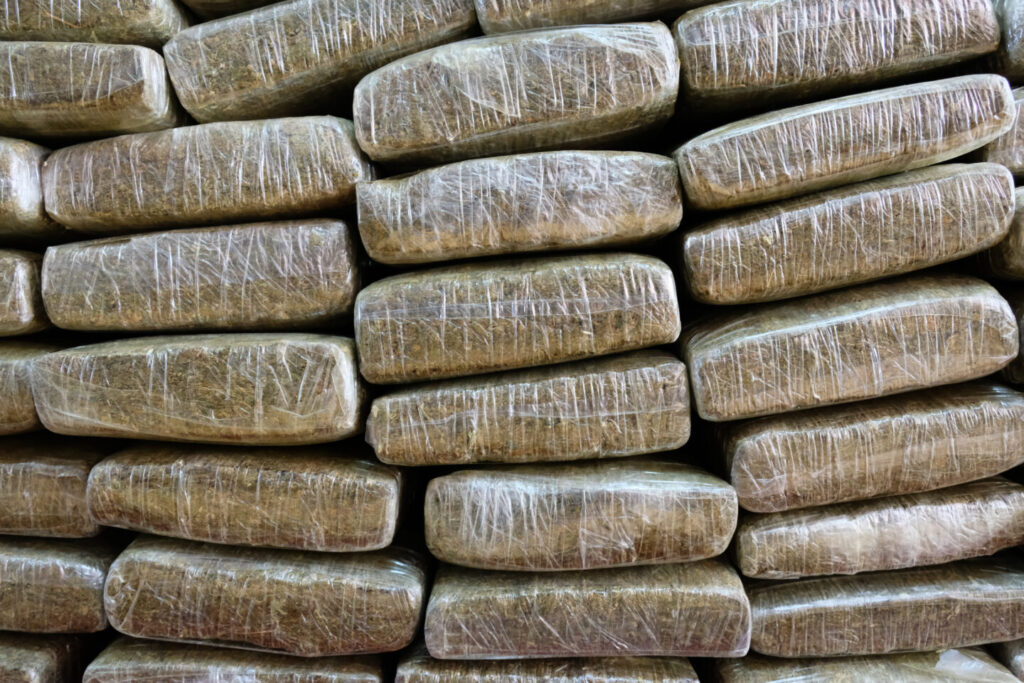
In 2022 and the first half of 2023, Canada went through a whopping 611.7 million grams (yeah, that’s 1.3 million pounds) of cannabis dried bud, but not in a fun way. All of the marijuana in question was tossed out by licensed producers as the result of a disparity between how much is grown and how much people use.
They chucked out nearly 44% more than the 425.3 million grams destroyed last year. According to Health Canada, the reported figures actually only account for the weight of destroyed unpackaged cannabis. This indicates that the total volume of cannabis waste in Canada, including products that had already been packaged, could be much higher, perhaps well exceeding 2 billion grams.
Industry expert and consultant Farrell Miller notes that the majority of this discarded product was destroyed for being too old and having too little THC. “There is no demand for old and low-THC products, so manufacturers of finished products are not buying this biomass as inputs,” she said. “It’s likely low-quality material with no value. “As consumers become more savvy with packaging dates on dried cannabis products, this trend will only continue.”
If the destructive pattern continues at the same alarming rate from July to December 2023, it could mean that Canada’s cannabis industry has already hit the apex of its supply-demand mismatch. So it’s trying to move towards a balance, as wasteful as it is (not to mention awful for the environment). Canada may be the first big nation to legalize adult-use weed back in 2018, but we know now that Canadians aren’t smoking enough to keep up with the supply. MJBizDaily estimates that more than 1.7 billion grams (3.7 million pounds) of unsold and unpackaged dried flower have been thrown out. And this number doesn’t even include the packaged products. Approximately 24 million packages of cannabis products have also met the same fate since 2018.
After Canada legalized recreational cannabis sales, there was a surge in licensed producers excessively cultivating the plant. As a result, from 2017 to around 2020, right before the pandemic hit and during the cannabis stock boom, the focus of analysts and investors was more on the potential production volume promised by cannabis companies rather than on their actual sales figures. This motivated licensees to invest heavily in giant greenhouses. However, the model was not sustainable. These vast cultivation areas generally fell short of delivering the premium, high-THC cannabis that consumers were seeking, highlighting a significant gap between production output and market demand.
Marie Sweeney, a cannabis team adviser at Cannabis License Experts, a consultancy based in Ontario, has also noted that the slew of weed business shutdowns in the industry is part of why they’re destroying so much herb. She notes that bankrupt companies are often forced to get rid of any unsold products if they are not sold off prior to the expiration date of their federal permits.
As per MJBizDaily, Sweeney also says that the new labeling standards for high-THC products are a major issue. While plenty of cannabis users understandably want strong weed, this creates a market surplus of lower THC but still quality cannabis flower. Plenty of wholesalers have policies of rejecting products with less than 20-25% THC. Furthermore, Sweeney points out that many companies don’t have effective business models. These are all problems made worse by the fact that there’s just a rampant overproduction of cannabis.
So what about a solution to this heartbreaking problem of wasted weed? Miller suggests that the Canadian federal government should seek methods to align public policy and regulatory activities more closely with provincial regulators and cannabis license holders. “There haven’t been any limits placed on issuing licenses, and that is contributing to the oversupply,” she said. “If there was more of a national coordination effort, that would give the federal government more insight into what is actually making it onto the shelves in stores. Only the federal government licenses production – and the provincial and territorial governments manage retail – so a more coordinated approach within the industry, among the provincial and federal governments, would help manage the oversupply of licensed products.”
She adds that those who have cultivation licenses must find a way to grow cannabis that meets minimum THC requirements if they want anyone to buy their product. “Retailers and wholesale suppliers across the country have adapted to consumer demands by purchasing primarily high-THC products,” she said. “Licensed growers and manufacturers have accumulated trim and biomass that cannot be sold or created into high-impact products, (meaning it) is often destroyed. Improved oversight, data sharing, and communication between the federal government and retailers across the country would help control the production of excess cannabis by balancing production with consumer demand.”
Read full article on High Times

